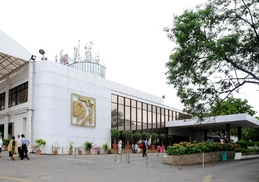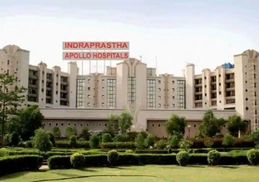
+91 8095511877

+91 8095511877
Aplastic anemia is a type of anemia that damages the stem cells in your bone marrow. It leads to a state where the body stops producing enough new blood cells. This disease can cause a lot of health complications, such as fatigue and infections. It is a rare and severe condition that needs treatment.
Aplastic anemia can develop at any age. When you have this disease, your red blood cells (RBCs) do not work properly. These RBCs carry oxygen to the different organs in your body. So it impacts the supply of oxygen to the various parts of your body.
This condition can be mild or severe, depending on the symptoms. It can occur all of a sudden or gradually worsen over time.
The main cause is damage to your bone marrow. Your bone marrow has stem cells that produce blood cells and plasma cells. In some cases, your immune system attacks the stem cells in your bone marrow. It does it as it mistakes these stem cells to be foreign bodies.
Due to this, your bone marrow is either empty (aplastic) or contains a very small amount of blood cells (hypoplastic). There are a few other reasons for this disorder apart from the immune system attack. These are
Idiopathic aplastic anemia is the term for those cases where the doctors cannot find the cause.
There may not be any signs in many cases. And when they show signs, it can be very similar to those of general anemia. These include
Some people may also experience chest pain.
Your doctor will first check your symptoms and ask for your detailed medical history. Then, they will ask for some tests that can help to confirm the disease. These include
Blood tests - Complete blood count (CBC) tests will show the count of your red blood cell, white blood cell, and platelet count.
Bone marrow biopsy - The doctor will use a needle to remove a small sample of bone marrow from a large bone (from the hip or pelvis area) in your body. An examination of this sample will help to rule out any other blood-related diseases which have similar signs. Your doctor will look for the stem cells count in your bone marrow. If you have aplastic anemia, your stem cell count will be low.
Your doctor will run a few more tests after this to confirm the type of aplastic anemia. Acute aplastic anemia comes all of a sudden and can be very serious. Chronic cases develop over time, but they are just as difficult to treat.
The goals of the treatment are two-fold. The first aim is to manage your symptoms. Along with this, there will be steps to increase the stem cell count in your bone marrow so that it produces new blood cells.
The treatment will depend on the severity of your condition. These are the options available
Blood transfusions- Blood transfusions will help control the bleeding and relieve the symptoms. You can receive
There's no limit to the number of blood transfusions you can have. Still, there are certain complications involved if you have multiple transfusions. The transfused red blood cells will contain a lot of iron. The iron can accumulate in vital organs and damage it.
After some time, your body will start to develop antibodies against the blood transfusions. It will make it less effective in the long run.
Bone marrow transplant (BMT) is the main option if you have severe aplastic anemia. This procedure will replace the damaged stem cells in your bone marrow with healthy stem cells from a donor.
First, you will have chemotherapy or radiation to kill the damaged or cancerous cells in your bone marrow. Then, during BMT, the doctors will infuse the healthy stem cells from the donor into your bloodstream. These new healthy stem cells will then start creating new blood cells.
BMT is the most successful in people under the age of 40 who have sibling donors. After this treatment, you will have to stay in the hospital for quite some time. There are a few risks associated with this treatment. Your body could reject the transplant, which would lead to serious complications. To avoid this, you will need to have medicines that prevent the rejection of the donated stem cells.
If you are very old or have other serious health issues, BMT may not be an option. In such cases, the treatment involves drugs that suppress your immune system. It will thus prevent it from attacking healthy stem cells in your bone marrow.
Immunosuppressants are such drugs that can stop the activity of your immune system, which kills healthy cells. It will thus help your bone marrow recover and form new blood cells.
The issues with this method are
So, this method is useful only for a short period.
Your doctor may also suggest some bone marrow stimulant drugs like sargramostim, filgrastim, and pegfilgrastim. These medicines stimulate your bone marrow to produce more blood cells.
As aplastic anemia weakens your immune system, you may need antibiotics or antiviral medicines to fight new infections.
Severe aplastic anemia can be fatal. But with proper treatment at the right time, it can be cured. However, there can be complications both due to the disease and with the treatment. These include
Some people who receive immunosuppressive therapy are at risk of developing other serious conditions like MDS(myelodysplastic syndrome) and AML(acute myeloid leukemia).
The outcome of patients after treatment for aplastic anemia has improved a lot in recent years. The main factors that affect the results are


This article has been reviewed for medical correctness and relevance by
Dr Niti Raizada
Dr. Niti Raizada is a senior Medical Oncologist with over fifteen years of experience in the field. Dr Niti has special interests in the areas of Thoracic, Gastrointestinal, Breast, Gynaecological Oncology, and Bone Marrow Transplants. She did her MBBS at Gandhi Medical College, Bhopal; MD-General Medicine at G R Medical College, Gwalior, DNB-General Medicine from National Board Of Examination,DM from Adyar Cancer Institute Chennai and Fellowship in Hematology from Hammersmith Hospital and Imperial College,London. She is a member of American Society of Clinical Oncology,USA; Royal College of Physicians,Edinburgh,UK; Member of Pharmacy Committee,Member of DNB teaching program in Medical Oncology and European Society of Medical Oncology (ESMO).

Aida Ismail
Australia

Apollo Chennai

Apollo Health City

Apollo Indraprastha

Aster CMI

BLK Hospital

Fortis Bangalore
Frequently Asked Questions
Is aplastic anemia curable?
What are the common early signs of aplastic anemia?
What are the available treatments for aplastic anemia in India?
What is the cost of bone marrow transplant for aplastic anemia in India?